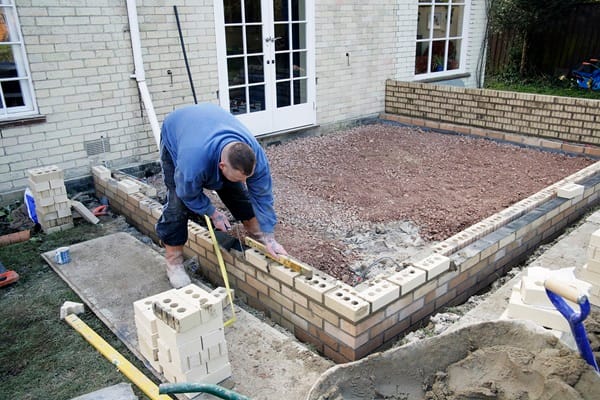In the UK construction industry, compliance is a legal requirement that has to satisfy both the Building Regulations and NHBC inspectors.
Whether you’re pricing up a new build or sourcing materials to renovate, this guide walks you through the brick strength grades, applications, and compliance essentials. This information can help you avoid costly mistakes and build confidence across the board.
Compressive strength basics
Compressive strength, measured in N/mm², gauges how much load a brick can bear before crushing. In the UK, BS EN 771-1 requires manufacturers to declare this measurement, with engineering bricks referenced in the National Annex.
Typical clay facing bricks range from 9 to 20 N/mm², while engineering bricks can reach up to ≥75 N/mm² (Class B) or ≥125 N/mm² (Class A).
The NHBC suggests that you have a minimum of 9 N/mm² for one- or two-story buildings and 13 N/mm² for three-storey buildings. Weaker bricks (those with less than 3.5 N/mm²) aren’t suitable for load-bearing walls. Always verify that the declared strength matches the project’s structural demands before procurement.
Common grades and use cases
Here is how the most common categories of bricks stack up:
At 9 to 10 N/mm², these are suitable for outer walls, facades, and other aesthetic placements. They are lighter, easier to work with, and available in diverse textures and colours. They are not reliable for structural or high-load-bearing areas.
Made to EN 771-3 standards, concrete bricks average about 22 N/mm² and offer excellent frost resistance (usually F2 rated). They’re especially useful in exposed environments or where consistent color and size are required. For high-stress sports, cills, copings, or below DPC, you’ll need bricks rated 36 N/mm² or higher.
Here’s where you get the strength and durability for your heavy-duty needs:
- Class B- A minimum of 75 N/mm² compressive strength and ≤7% water absorption.
- Class A- This is even tougher brick, clocking in at 125 N/mm² and ≤4.5% water absorption.
Though not particularly pretty, they are ideal for foundations, retaining walls, soakways, and anywhere water or frost resistance is required.
Reclaimed bricks require verification for external or structural use, including freeze/thaw resistance ratings and salt content tests, as specified in EN 771-1. No certs? No go.
Standards to know
Some key standards to keep in mind include:
This baseline outlines strength classifications, water absorption, salt content, etc. All these are important to let you know the compressive strength and durability class you need.
These specify minimum compressive strengths depending on the building’s height, as well as expectations for frost resistance and salt tolerance on exposed brickwork.
When doing structural calculations, this is your go-to. It sets the rules for designing load-bearing masonry walls and the type of brick and mortar combination you need.
-
NHBC Inspector Guidelines
While informal, these powerful guidelines influence what gets signed off or sent back. Adhere to them to avoid delays or costly teardowns.
Avoiding common errors
- Misapplying low-grade bricks- Using 9 N/mm² facing bricks in external frost-exposed areas can cause spalling (flaking) and premature failure. For those applications, use F2,S1 or F2,S2 rated bricks according to NHBC guidelines.
- Ignoring environmental exposure- Scotland and exposed sites require frost-resistant bricks. As such, bricks rated F0 or F1 should not be used externally.
- Overengineering- You could specify high-strength engineering bricks for standard housing, but that is costly and overkill. Best practices suggest matching strength to load requirements and standards.
- Underengineering- Conversely, using weak bricks to save costs can trigger structure failures and planning delays.
- Documentation gaps- Missing EN 771-1 or EPD declarations can flag issues with NHBC inspectors or quality checkers, potentially delaying sign-off.
Conclusion
Brick strength metrics provide you with foresight, craftsmanship, and compliance. By understanding the compressive ratings, frost and salt durability ratings, and relevant British and Euro standards, contractors can make better choices and avoid costly mistakes.
Use the correct bricks for each project and always make sure your paperwork is in order. With the right approach, you can build something solid to stand the test of time, weather, and an inspector’s checklist.
Get real time update about this post category directly on your device, subscribe now.

